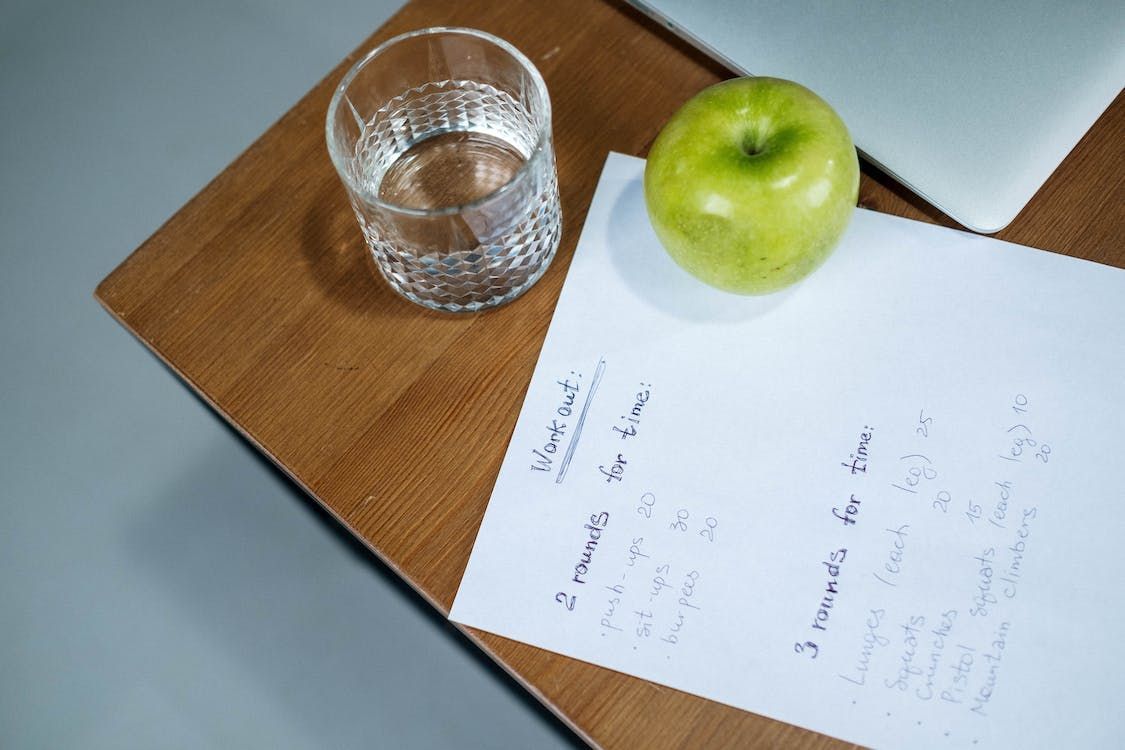The purpose of a training diary is to provide a way to track progress over time, identify areas for improvement, and help set goals. By keeping a detailed record of their workouts, individuals can also ensure that they are steadily progressing towards their fitness goals and can revise their routines as needed.
Additionally, many people find that keeping a training journal helps them stay motivated and accountable because they can see how far they’ve come and identify areas where they need to push themselves harder.
Benefits of keeping a training diary

Responsibility: One of the most important benefits of keeping an exercise journal is accountability. When you write down your workouts, you can see how often you train, how much progress you’re making, and where you need to improve. You’re more likely to stick with your fitness routine when you know you’re tracking your progress.
Goal setting: A training diary lets you set specific, measurable goals and track your progress towards them. It helps you stay motivated and focused on achieving your goals. When you see the progress you’re making, it’s easier to stick with your fitness routine.
Custom workouts: When you keep an exercise diary, you can track the details of your workouts, such as the exercises you do, the number of sets and reps, and the weight you use. This helps you create custom workouts tailored to your specific needs and goals.
Identification of models: Keeping an exercise diary can help you identify trends in your exercise routine. For example, you may notice that you have more energy and perform better during morning workouts than during evening workouts. This can help you adjust your routine to optimize your performance.
Celebrate Achievements: Keeping a training diary allows you to celebrate your accomplishments, no matter how small. When you watch your progress, you can see how far you’ve come, which can be incredibly motivating.
Start with a training diary

1. Choose a Format: The first step to starting a training diary is choosing a format that works for you. You can use physical journals, digital journals, or fitness tracking apps. Choose a format that you are comfortable with and are likely to stick to.
2. Set goals: Before you start tracking your workouts, set specific, measurable goals. Make sure they are achievable and realistic. For example, if you want to lose weight, set a goal to lose a certain number of pounds by a certain date.
3. Record your workouts: Every time you train, log your workout details, including the exercises you performed, the number of sets and reps, the weight you used, and the duration of your workout. You can also record how you felt during training.
4. Track progress: Check your training diary regularly to track your progress towards your goals. Adjust your routine if necessary and celebrate your accomplishments.
5. Be consistent: Consistency is key when it comes to keeping a training diary. Get into the habit of regularly recording your workouts. This will help you stay on track and progress towards your goals.
Tips for Using a Training Log Effectively
You can get the most out of your training diary by carefully following these tips:
Be detailed: The more detailed your exercise log, the better it is for reaching your goals. Include the specific exercises you performed, the number of sets and reps, and the weight you used. This will help you track your progress accurately.
Use positive language: Use positive language when writing in your training journal. Instead of saying, “I didn’t do well today,” say, “I tried harder today than yesterday.” This will help you stay motivated and focused on your progress rather than dwelling on setbacks.
Be honest: It is essential to be honest when recording your training sessions in your diary. If you skipped a workout or didn’t perform as well as you hoped, write it down. This will help you identify areas where you need to improve and make adjustments to your routine.
Set realistic goals: It is crucial to maintain realistic expectations while setting goals. If the goals are too ambitious, not achieving them can be disheartening. To avoid this, start with achievable goals and gradually progress to more demanding goals.
Celebrate Achievements: It is essential to celebrate your accomplishments, no matter how small. Each time you reach a milestone or get closer to your goal, be sure to recognize and appreciate your progress. It will keep you motivated and help you stay focused on your fitness journey.

An exercise journal can be a valuable tool for anyone looking to improve their fitness and health. It helps you stay accountable, set and achieve goals, and track your progress. By logging your workouts and regularly reviewing your progress, you can make adjustments to your routine and stay motivated to reach your fitness goals.
Remember to be honest, set realistic goals, and celebrate your accomplishments along the way. With consistency and dedication, a training journal can help you achieve your health and fitness goals.

